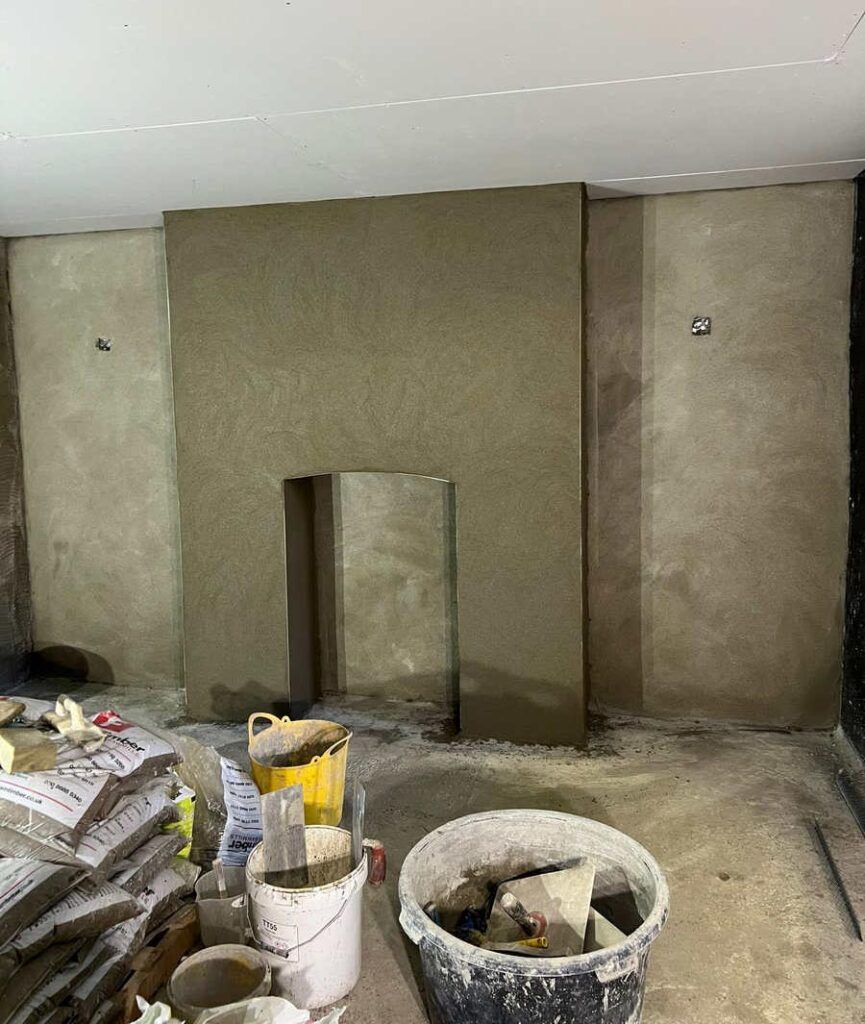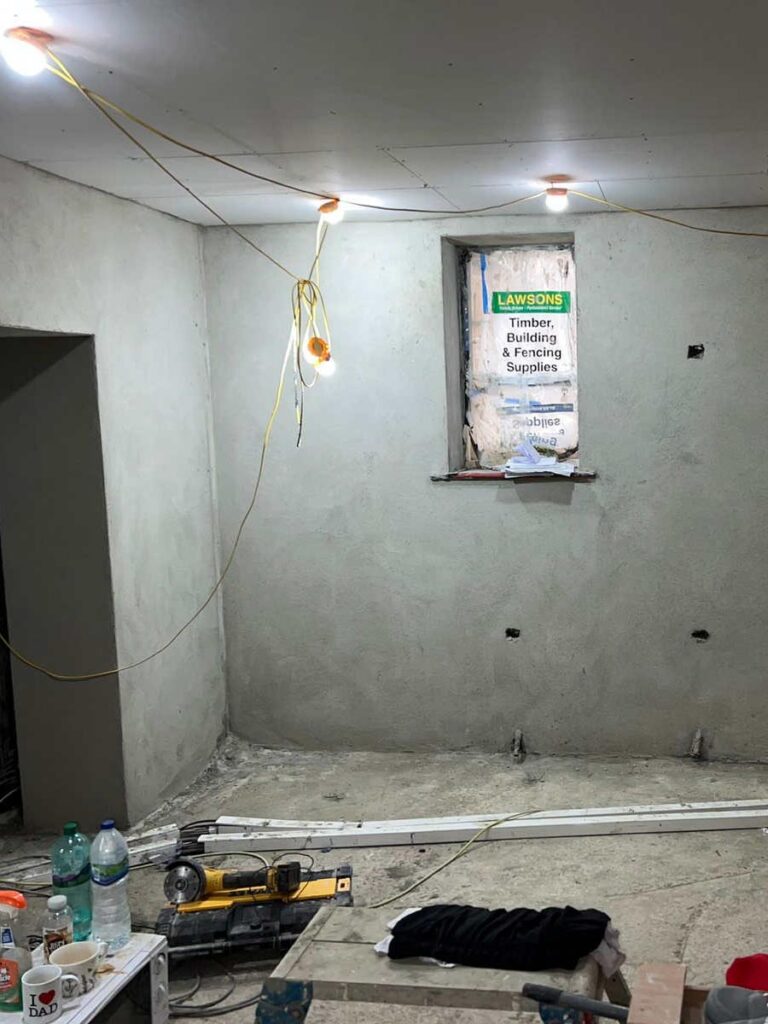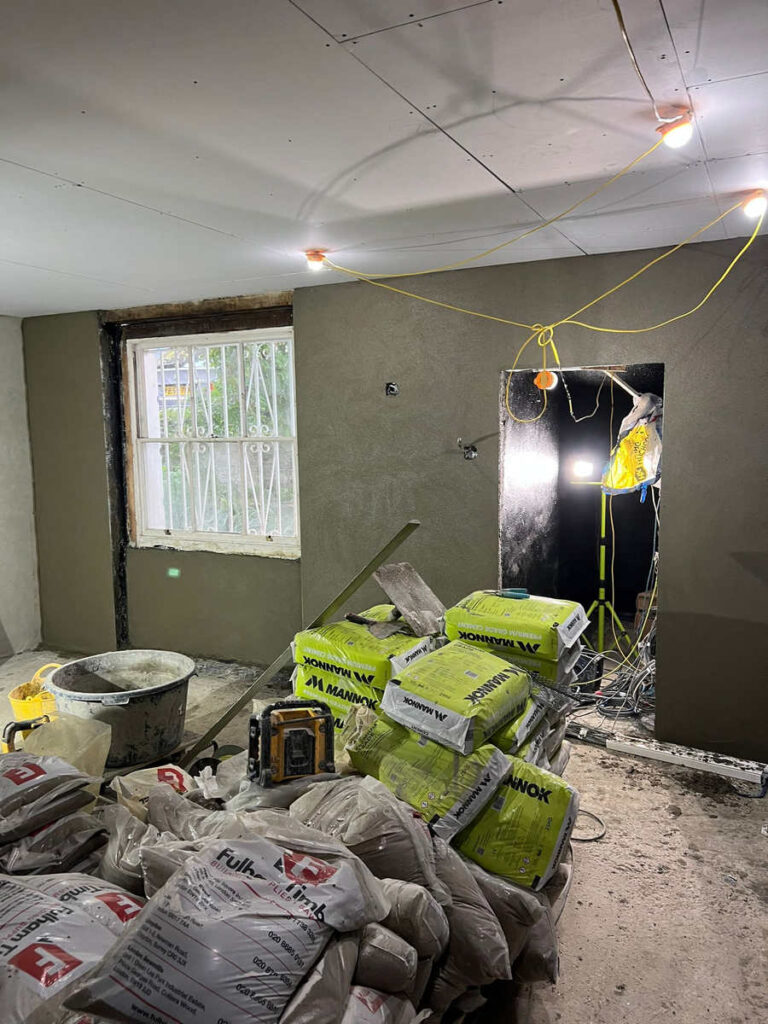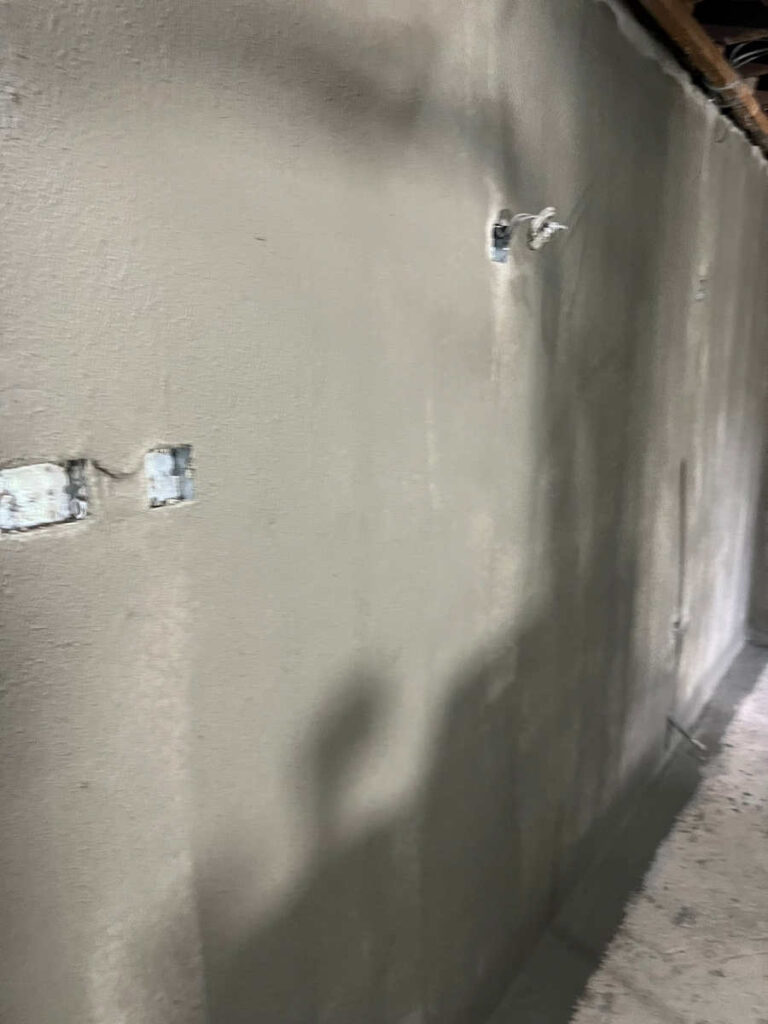
Basement Tanking Type A Tanking Slurry TT55 Vapour Membrane Waterproof Render
Crystal Damp Proofing & Basements
Tanking Service in Falcon Road - Cellar, Vault & Basement
Tanking refers to a process of waterproofing or damp-proofing a cellar, vault, or basement area to prevent water ingress and moisture-related issues. This process involves creating a waterproof barrier on the walls and floors to ensure that water cannot penetrate the interior space.
In the context of cellars, vaults, and basements, tanking is typically undertaken to protect these below-ground areas from water seepage or flooding. These areas are more prone to moisture-related problems due to their underground location, which can lead to issues like dampness, mould growth, structural damage, and other issues if left untreated.
If you have a damp basement and believe that tanking might be the waterproofing solution you need, please contact us today using the form below or call us at 020 8432 3350 or 07720 752231.











A Cavity Drain Membrane System, also known as Type C Waterproofing, is a popular method for basement tanking that involves the installation of a drainage membrane along with a sump pump system. Here’s how this system operates:
Cavity Drain Membrane: A cavity drain membrane is typically made of high-density polyethylene (HDPE) or polypropylene (PP). It is affixed to the walls and/or floor of the basement. The membrane creates a void or cavity between itself and the structure’s surfaces, allowing any water that enters the basement to be directed and controlled.
Drainage Channels: The cavity drain membrane features built-in studs or dimples that create a continuous air gap between the membrane and the walls/floor. This air gap serves as a drainage channel, enabling water to flow downward freely.
Floor Drainage: Typically, the membrane is installed on the basement floor, sloping toward strategically positioned floor drains or channel drains. This arrangement ensures that any water entering the basement is collected and directed towards the drainage system.
Wall Drainage: In cases where water ingress through the walls is a concern, the cavity drain membrane is installed vertically on the walls. This permits water to access the cavity formed by the membrane and flow downward toward the floor drains or channel drains.
Sump Pump System: A sump pump system is an integral component of a cavity drain membrane system. It comprises a sump chamber or pit situated at the lowest point of the basement. Any water gathered by the drainage channels or floor drains is directed to the sump chamber. The sump pump, installed within the chamber, automatically activates to pump out the collected water to a designated drainage point, such as a storm drain or drainage channel.
Benefits of a Cavity Drain Membrane with Sump Pump System:
- Controlled water management: The cavity drain membrane system enables the management and control of water within the void, directing it toward the sump pump system. This effectively prevents water accumulation in the basement, reducing the risk of flooding and water damage.
- Flexibility: The cavity drain membrane system is highly adaptable, capable of accommodating structural movement and shifts. The membrane acts as a flexible barrier that can adjust to changes without compromising its effectiveness.
- Minimal disruption during installation: Installing a cavity drain membrane system is generally less intrusive in comparison to other basement tanking methods. It can be applied to existing structures without the need for extensive excavation or structural modifications.
- Maintenance and servicing: The sump pump system necessitates periodic maintenance and servicing to ensure optimal operation. This typically involves pump inspection, sump chamber cleaning, and drainage channel checks. Regular maintenance contributes to prolonging the system’s lifespan and upholding its reliability.
Crystal Damp Proofing & Basement LTD can give
a discount of 10% to every NEW customer.
The tanking process generally includes the following steps:
Surface preparation: The walls and floors of the cellar, vault, or basement are prepared by cleaning, removing any loose materials, and repairing any existing damage.
Waterproofing membrane: A waterproof membrane or coating is applied to the prepared surfaces. This membrane acts as a barrier, preventing water from passing through and reaching the interior space. Various types of waterproofing membranes, such as cementitious coatings, liquid-applied membranes, or sheet membranes, can be used depending on the specific requirements and conditions.
Drainage system: In some cases, a drainage system may be installed alongside the tanking process to manage any water that does penetrate the exterior walls. This can involve the installation of perimeter drains, sump pumps, or other drainage solutions to redirect water away from the cellar, vault, or basement.
Finishing touches: Once the tanking system is installed, appropriate finishes such as plastering or tiling can be applied to the interior walls and floors to create a usable and aesthetically pleasing space.
Cellar and Basement Tanking Solutions in Falcon Road
When it comes to cellar and basement tanking solutions, there are several options available to effectively waterproof and protect these areas from water ingress.
Here are some commonly used tanking solutions:
- Cementitious Tanking: This approach involves the application of a cement-based waterproofing coating or slurry onto the walls and floor of the cellar or basement. It creates a robust and waterproof barrier that prevents water penetration. Cementitious tanking can be employed in both new construction and existing structures.
- Cavity Drainage Membrane System: This system comprises the installation of a cavity drainage membrane on the walls and/or floor of the cellar or basement. The membrane forms a sealed cavity behind it, enabling the redirection and drainage of any infiltrating water through a network of channels or sump pumps. This method is especially effective when dealing with high water table levels or persistent water issues.
- Liquid Applied Membranes: Liquid waterproofing membranes, such as liquid rubber or polyurethane coatings, are directly applied to the surfaces of the cellar or basement. These membranes create a seamless, flexible, and durable barrier against water ingress. Liquid applied membranes can be suitable for both horizontal and vertical surfaces.
- External Tanking: External tanking entails the application of a waterproofing system to the exterior walls and foundation of the cellar or basement. This method is typically employed during new construction or major renovations, forming a barrier that prevents water from reaching the structure’s walls and foundation initially.
- Combination Approaches: In certain situations, a combination of tanking methods may be utilised to provide enhanced protection. For instance, a cementitious tanking system can be combined with a cavity drainage membrane to deliver multiple layers of waterproofing.
It’s important to bear in mind that the choice of the most suitable tanking solution depends on several factors, including the severity of the water issue, specific construction details, and the intended use of the cellar or basement space. It is advisable to consult with a professional waterproofing specialist or contractor who can assess your specific requirements and recommend the most appropriate tanking solution for your cellar or basement.
Importance of Basement Tanking Treatment in Falcon Road
Basement tanking, or waterproofing, holds significant importance in
Protection Against Groundwater:
Falcon Road Preventing Structural Damage: Prolonged exposure to moisture can result in structural damage within basements. Water seepage may weaken the foundation, induce cracks, and jeopardize the structure’s stability. Basement tanking establishes a protective layer that safeguards the integrity of the building’s foundation and structure.
Creating Usable Space: Effective basement tanking empowers homeowners in
Falcon Road Preventing Mold and Mildew: Damp or wet basements serve as breeding grounds for mould and mildew, which can negatively impact indoor air quality and pose health risks. Through basement tanking, moisture levels are controlled, preventing the proliferation of mould and mildew. This promotes a healthier environment and reduces the risk of respiratory problems or allergies.
Property Value: A well-maintained and dry basement enhances the value of a property. Proper basement tanking in
Falcon Road Long-Term Cost Savings: Investing in basement tanking upfront can save homeowners money in the long run. By preventing water damage, structural issues, and mould growth, it diminishes the need for costly repairs and remediation efforts that may arise from water-related problems.
Considering the potential water-related challenges in
What is the difference between Tanking & Waterproofing?
Tanking and waterproofing are related terms used in the construction and building industry to address water-related issues, but they differ in their approaches and applications.
- Tanking: Tanking refers to a specific technique used to establish a waterproof barrier in areas prone to water penetration, such as cellars, basements, or underground structures. It involves applying a waterproofing system, often in the form of a membrane or coating, directly to the surfaces (walls and floors) of the structure. The aim of tanking is to prevent water from entering the interior space by creating a watertight seal. Tanking is commonly employed in below-ground areas where water infiltration is a significant concern.
- Waterproofing: Waterproofing, on the other hand, is a broader term that encompasses various methods and materials used to make a surface or structure resistant to the ingress of water. Waterproofing can be applied to a wide range of surfaces, including foundations, roofs, walls, balconies, bathrooms, and more. The purpose of waterproofing is to protect the underlying structure from water damage, such as leaks, dampness, mold growth, and deterioration caused by moisture.
Waterproofing methods can include tanking, as described above, but they also encompass other techniques such as:
External Waterproofing: This method involves the application of waterproof membranes or coatings to the exterior surfaces of a structure, such as the outer walls or foundation, to prevent water from reaching the structure in the first place.
Internal Waterproofing: This approach entails applying waterproof membranes or coatings to the interior surfaces of a structure, such as walls or floors, to prevent water penetration and safeguard the interior space.
Cavity Drainage Systems: This system involves the installation of a system designed to collect and redirect water that enters a structure, utilizing drainage channels, sump pumps, and membranes to manage water ingress.
Chemical Injection: This technique involves the injection of specialized chemicals into the structure’s surfaces or joints to create a water-repellent barrier.
In summary, tanking is a specialised approach to waterproofing, primarily used to establish a watertight seal in areas susceptible to water penetration, such as cellars and basements. Waterproofing, on the other hand, encompasses a wider spectrum of techniques and materials employed to safeguard structures from water damage across various surfaces and applications.
Tanking a cellar is a task that we, at Crystal Damp Proofing & Basements, regard as a skill in which we excel. With many years of substantial experience, we can confidently assert that we are the ideal company for this job. If you need services related to waterproofing a cellar or damp proofing a basement, our Basement Tanking Falcon Road
Expert Basement Tanking In Falcon Road SW11
Crystal Damp Proofing & Basements takes pride in offering Basement and Cellar Tanking services for over two decades. Given the nature of the properties in
LOCAL AREA INFO
Falcon Road, situated in London, enjoys a strategic urban location that provides residents with a mix of convenience and local amenities. This road is commonly found in various neighborhoods within the city, and its specific attributes can vary based on its exact location. Residents on Falcon Road typically benefit from the close proximity of shops, restaurants, schools, and public transportation options, making it an ideal location for those seeking the convenience of city living. The exact character and atmosphere of Falcon Road in London may vary depending on its borough and neighborhood context, but it is generally a part of the bustling urban landscape that defines the city.

